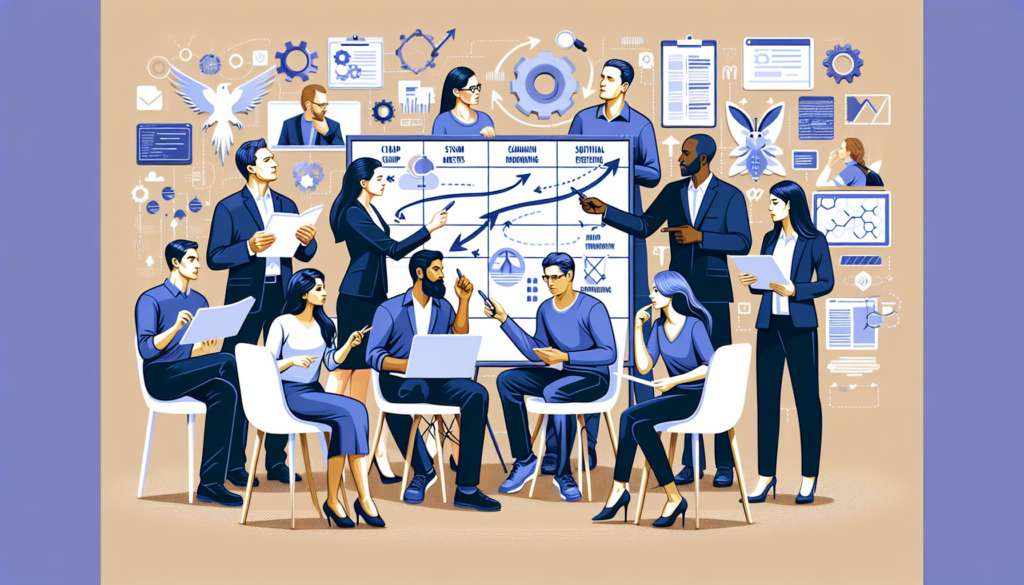The Agile methodology has revolutionized the software development landscape, fostering an environment where efficiency and adaptability play crucial roles. At the core of these environments lies effective communication and team collaboration, pillars that not only support but also drive performance and success in projects that adopt this philosophy. This article unravels the complexities and advanced techniques underlying human interaction within Agile teams, examining fundamental theories and projecting how the ongoing evolution of these practices can lead to significant innovations in software project management and other areas.
Fundamental Theory in Agile Communication and Collaboration
The Agile framework is based on the Agile Manifesto, which underscores the importance of individuals and interactions over processes and tools. From this perspective, communication reaches a new dimension, where simplicity, clarity, and bidirectionality are prioritized. Specifically in Scrum, one of the most popular Agile frameworks, daily communication is highlighted through ceremonies such as the Daily Standup, Sprint Planning, and Sprint Reviews.
In collaboration, it’s crucial to recognize that each team member brings a unique and valuable perspective. Agile methodologies are structured on trust and mutual respect, premises that are reinforced through openness and constructive feedback during Retrospectives, key moments to review and improve work processes.
Technical Advances in Communication and Collaboration
Over time and with the incorporation of advanced technological tools, Agile communication and collaboration have undergone a significant evolution. Platforms such as Slack, Microsoft Teams, and Asana facilitate the flow of information and the management of tasks and pending items, allowing real-time visibility of project progress.
However, true innovation lies in the adoption of practices such as Continuous Integration (CI) and Continuous Deployment (CD), which enable teams to collaborate more effectively by integrating work frequently, detecting errors quickly, and ensuring software quality. Moreover, the introduction of DevOps methodologies encourages a culture of collaboration between developers and operations, breaking silos and accelerating the delivery of value to the customer.
Practical Applications and Case Studies
Effective communication and collaboration within Agile teams are not limited to scheduled meetings; practices like Pair Programming and Mob Programming are tangible examples of how collaboration increases both code quality and team competencies. In case studies of leading technology companies, such as Spotify and Google, a direct correlation has been observed between the implementation of these techniques and an increase in team productivity and satisfaction.
A particularly well-recognized study was carried out by the Harvard Business Review, which found that in well-integrated Agile teams, members reported higher levels of job satisfaction, as well as a more pronounced sense of purpose, directly related to the quality of internal communication and collaboration.
Comparison with Previous Work
Comparatively, the evolution of communication and collaboration practices in Agile teams contrasts with more traditional methodologies, such as the Waterfall model, where the rigidity and sequentiality of the stages impose barriers to immediate and constant feedback. This dynamic is reflected in results often outdated in the face of changing customer requirements.
Future Directions and Potential Innovations
The incorporation of Artificial Intelligence (AI) and Machine Learning (ML) into Agile project management has considerable disruptive potential. AI could analyze real-time communication data to identify issues and assist in decision-making. Similarly, ML is postulated to be able to predict development bottlenecks based on historical patterns, adjusting strategies in real time to maximize efficiency.
If communication and collaboration tools and practices evolve at this pace, it is plausible that the Agile teams of the future will be even more autonomous and adaptable to unexpected changes, with a responsiveness that transcends current methods, laying the groundwork for a new era of data-based project management and machine learning.
In conclusion, communication and collaboration in Agile teams are not a secondary aspect, but a critical factor that dictates the success of projects in a world increasingly driven by agility and the ability to adapt. Advanced tools and techniques, accompanied by a philosophy of continuous improvement and an environment fostered by mutual respect, are the fertile ground where highly effective teams thrive and where customer satisfaction and value delivered reach their highest expression.

